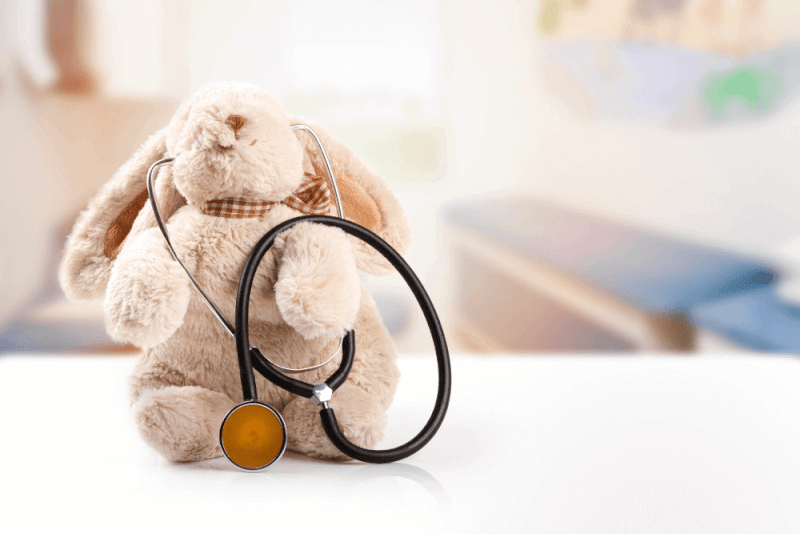30-Second Summary
- Hirsutism, commonly seen around the mouth and jaw, is caused by androgens, which are male hormones.
- This condition, affecting the upper lip, chin, chest, blood, and back of women, is more common in those with conditions like PCOS.
- It is known that certain medications can cause excessive hair growth.
- To treat excessive hair growth, it is necessary to diagnose the underlying cause, followed by appropriate treatment procedures.
What is Hirsutism (Excessive Hairiness)?
Hirsutism, commonly seen around the mouth and jaw, is caused by androgens, known as male hormones. This condition, primarily affecting women, can also affect men, though distinguishing between hirsutism and typical, thick long hair growth (terminal hair) is quite challenging.
This condition, affecting the upper lip, chin, chest, blood, and back of women, is more common in those from Mediterranean, Hispanic, South Asian, or Middle Eastern backgrounds, and particularly in those with conditions like PCOS.
Causes of Hirsutism (Excessive Hairiness)
The exact causes of excessive hairiness are often unknown, but it is thought to arise from the following reasons.
Polycystic Ovary Syndrome (PCOS)
This condition, typically starting in adolescence, leads to an imbalance of sex hormones. Over the years, PCOS can gradually lead to excessive hair growth, menstrual irregularity, obesity, infertility, and the formation of multiple cysts on the ovaries.
Cushing's Syndrome
This condition results from the body's exposure to high levels of cortisol hormone, either due to excessive cortisol production by the adrenal glands or the use of certain medications.
Congenital Adrenal Hyperplasia
This hereditary condition is characterized by the abnormal production of steroid hormones, including cortisol and androgens, by the adrenal glands.
Tumor
Although rare, a tumor in the ovaries or adrenal glands that produces androgens can cause excessive hairiness.
Medications
Certain medications are known to cause excessive hairiness. These include minoxidil, danazol used in the treatment of women with endometriosis, testosterone, and dehydroepiandrosterone. Also, indirect exposure through skin contact with a partner using topical products containing androgens is possible.
Postmenopause
Hormonal changes in the body after menopause can lead to an increase in facial hair, including mustaches and sideburns.
Other Conditions
If hirsutism appears suddenly with symptoms like a deeper voice, acne, or increased muscle mass, it may indicate a more serious health issue. These serious conditions can include congenital adrenal hyperplasia or tumors in the adrenal glands or ovaries that produce androgens.
Signs of Hirsutism (Excessive Hairiness)
The characteristic sign of hirsutism is coarse and dark body hair appearing in areas typically hairless, particularly on the face, chest, lower abdomen, inner thighs, and back.
Excessive hairiness due to high androgen levels can also present with various other symptoms, including:
- Deepening of the voice
- Baldness
- Acne
- Decrease in breast size
- Increase in muscle mass
- Enlargement of the clitoris
- Increase in sexual desire
Diagnostic Criteria for Hirsutism
Experts typically start with a physical examination to diagnose hirsutism. Other symptoms like acne should also be noted. Hormone tests are conducted to determine if the hirsutism is androgen-related.
After diagnosing excessive hairiness, grading must be performed using a scale known as the Ferriman-Gallwey scale. This scale determines the degree of hairiness by examining areas where excessive hair is observed and assigning a value from 0 to 4. A lower score indicates a mild condition, while a higher score indicates severity.
Other tests used in the diagnosis of hirsutism include:
- Ultrasound for imaging the ovaries and uterus
- X-rays for evaluating the ovaries and adrenal glands and diagnosing other diseases
Treatment Methods for Hirsutism (Excessive Hairiness)
To treat excessive hairiness, it is necessary to diagnose the underlying cause. Subsequently, appropriate treatment procedures are applied. Additionally, various treatment methods can be used to eliminate excessive hairiness. These methods include:
Weight Loss
The initial treatment for excessive hairiness is often weight loss. Losing even 5% of body weight can help reduce androgen levels and stop excessive hair growth.
Medications
The types of medications that can be used to treat excessive hairiness include:
Birth Control Pills
Birth control pills are the most commonly used treatment for hirsutism. These drugs reduce androgen levels while also regulating menstruation and preventing pregnancy. Side effects of these medications can include breast tenderness or swelling, headaches, irritability, or mood changes.
Androgen Suppressing Drugs
These medications reduce the amount of androgen produced by the body and can effectively treat mild cases of hirsutism. Side effects may include dry skin, heartburn, spotting between periods, dizziness, fatigue, and liver damage.
Low Dose Steroid Drugs
Low dose steroids may be prescribed if excessively active adrenal glands cause hirsutism. Side effects can include increased appetite, weight gain, mood changes, and blurred vision.
Insulin Lowering Drugs
These drugs reduce insulin and androgen levels. The use of these drugs is still controversial and they are not typically used as first-line treatment. Side effects can include allergic reactions, breathing problems, slow or irregular heartbeat, and symptoms of low blood sugar.
Gonadotropin-Releasing Hormone Agonists
These substances reduce androgen production from the ovaries. This treatment requires injections and is quite costly. It also does not provide more effectiveness than birth control pills. Side effects include hot flashes, weight gain, fluid retention, and decreased libido.
Eflornithine Facial Cream
Applied to the affected areas, this product does not eliminate hairs but slows their growth rate. Noticeable results take 6-8 weeks to achieve. If the cream use is discontinued, hair will return to its previous growth rate. Side effects can include allergic reactions, hair bumps, skin discoloration, stinging, and burning.
Hair Removal Options
Methods that remove hair from the roots are also one of the treatment options used in cases of excessive hairiness. These methods include:
Electrolysis
This technique uses a small needle and mild electric shocks to destroy hair follicles individually. Each hair follicle must be treated, which makes this technique impractical for large areas of the body. Side effects are rare but can include slight skin discoloration, temporary dark spots, and a mild tingling sensation.
Laser Hair Removal
This technique uses heat from lasers to destroy cells that contain a lot of pigment. Dark hairs contain more pigment and thus absorb more heat. The heat absorbed by the hairs is transferred to the hair follicles, destroying them and preventing hair growth. Side effects can include blisters, burns, scarring, darkened skin areas, and lightened skin areas.
Other Methods
In addition to the methods mentioned above, there are temporary home methods available that can temporarily remove hair. These methods include:
Shaving
Shaving is one of the most common hair removal methods and is simple and reliable. However, regular shaving is required to prevent hair regrowth. Side effects of shaving include cuts and ingrown hairs.
Bleaching
Bleaching products lighten the color of the hair. Leaving some bleaching products on the skin too long can cause irritation.
Waxing and Tweezing
Waxing and tweezing remove hair from the root and are effective but painful. Side effects can include skin irritation and ingrown hairs.
Hormonal Imbalances Leading to Hirsutism (Excessive Hairiness)
Excessive hairiness is linked to hormones called androgens. Excessive hairiness can occur if the levels of these hormones are higher than normal or if the body becomes more sensitive to androgens. Among the androgens, especially testosterone, is noticeable. The most common cause of hormone imbalances is polycystic ovary syndrome.
Psychological Effects Associated with Hirsutism (Excessive Hairiness)
Women dealing with excessive hairiness are known to experience significant emotional distress and social embarrassment. The cosmetic and psychological issues caused by hirsutism can reduce women's self-esteem and confidence. The cost of treatments like waxing or laser hair removal adds a financial burden. Additionally, many of the treatment outcomes are temporary. Therefore, dealing with excessive hairiness is costly and time-consuming.
Research on this topic shows that unwanted facial hair particularly imposes a significant psychological burden on women. Hirsutism affects individuals psychologically and also has psychosocial impacts, potentially leading to stress, anxiety, and depression.
Areas Affected by Hirsutism (Excessive Hairiness)
Hirsutism is the growth of hair in areas of the female body where hair is normally not seen. Therefore, the areas where excessive hairiness may be observed include:
- Upper lip
- Cheeks
- Sideburn area
- Chest
- Back
- Inner thighs
- Abdomen
- Buttocks
The Relationship Between Hirsutism (Excessive Hairiness) and Diet
Studies on excessive hairiness, especially when associated with PCOS, show that it occurs more frequently in individuals who are overweight. The reason for this relationship is that a diet high in fats and sugars increases intestinal permeability, which in turn allows negative bacteria to stimulate the immune system, causing mild inflammation. This situation can lead to the development of diabetes as well as cause the ovaries to be overstimulated, resulting in an increase in androgen levels.
The aforementioned link also highlights the importance of intestinal flora. For the development of intestinal flora, the consumption of foods rich in probiotics and symbiotics becomes important. Additionally, establishing a diet rich in fiber helps increase the good bacteria in the intestines and reduce intestinal permeability. Finally, individuals who are obese returning to their normal weight can significantly resolve the issue of excessive hairiness. Therefore, calorie restriction, along with attention to a healthy and balanced diet, is necessary.







